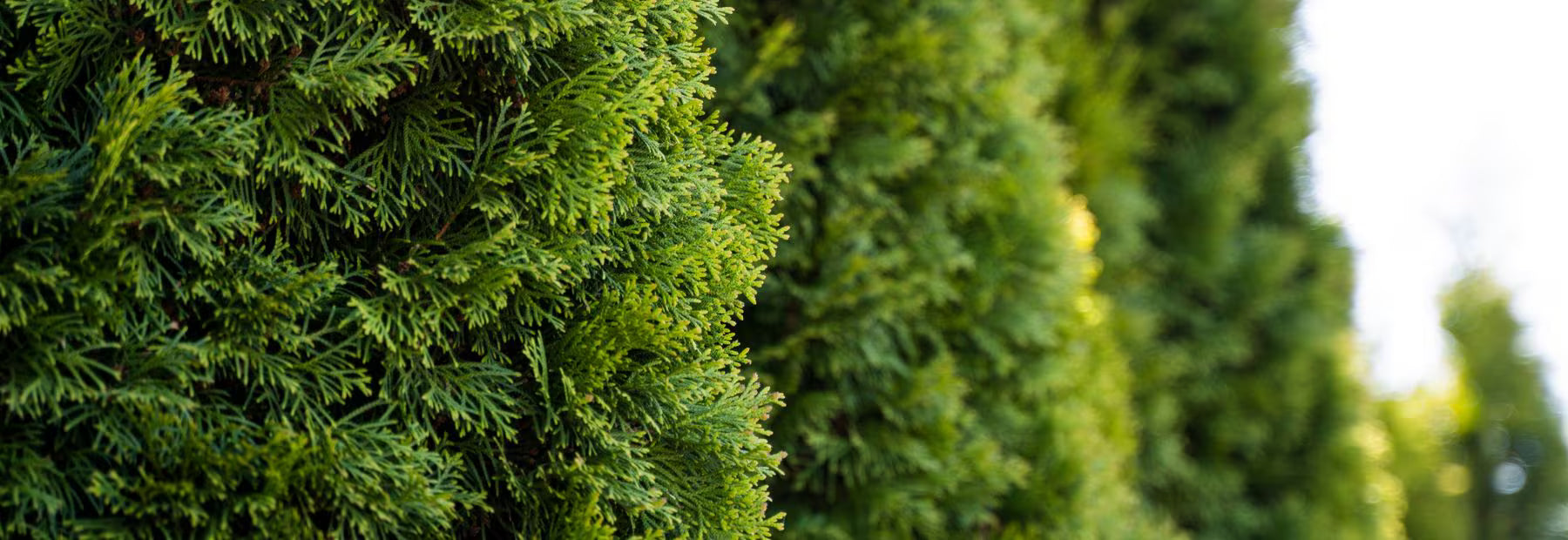
Trees & Shrubs & Pest Control
Trees and shrubs are long-lived perennials that play a critical role in landscaping yards and urban environments. When infested by pests such as aphids, mites, scale insects, or caterpillars, their ability to grow, flower, or provide shade and shelter can be severely compromised. Biological control helps restore balance by keeping pest populations in check while supporting long-term plant vitality.
One major advantage of biocontrol is its compatibility with pollinators and native beneficial insects. Unlike many chemical treatments that can harm non-target organisms or leave behind residues, biological agents are species-specific and degrade naturally. This makes them especially valuable in ornamental and public landscapes, where safety and aesthetics are priorities. In commercial nurseries and garden centers, biocontrol also supports sustainable production practices and can even improve plant marketability by reducing visible pesticide residues.
In addition, using biological control for trees and shrubs helps prevent resistance build-up. Many pests, especially those that reproduce quickly like aphids or spider mites, can develop resistance to synthetic pesticides over time. Biological agents, on the other hand, use complex, evolving interactions to suppress pest populations, making it much harder for resistance to develop. Whether you're managing a backyard, urban park, or a nursery, integrating biocontrol into your IPM (Integrated Pest Management) strategy contributes to healthier plants, safer environments, and more resilient ecosystems.
Monitoring
Regularly inspect trees and shurbs during the growing season for early signs of pest activity or damage. Begin by visually examining the upper and lower surfaces of leaves, stems, and branch junctions for common indicators such as webbing, frass (insect droppings), holes, wilting, or discoloration. Pay close attention to new growth and the undersides of leaves, where pests like aphids, mites, and whiteflies often hide. On the bark of the trees and shrubs, check for scale insects or bore holes that may indicate internal feeders. Scouting should be done weekly during the growing season and more frequently if pest pressures are high, as early detection allows for more targeted and effective control.
Jump-to:
Box Tree Moth Control Products
Buxatrap
-
Preventative:
- One trap per 180 square meters
-
Elimination:
- One trap per 30 square meters
-
Repeat Applications:
- Leave traps up from May until the end of November (dependent on geographic location). Add new pheromones to the traps every 8 weeks.
-
Notes:
- Dispensers release a species-specific sex pheromone, which lures the males of box tree moths into the trap. Once in the trap, they cannot escape and are easy to detect, count and identify. Trapping males aids in reducing the number of eggs laid by females, as they fail to mate.
Pherodis Cydalima perspectalis
-
Preventative:
- One Buxatrap per 180 square meters
-
Elimination:
- One Buxatrap per 30 square meters
-
Repeat Applications:
- Leave traps up from May until the end of November (dependent on geographic location). Add new pheromones to the traps every 8 weeks.
-
Notes:
- Dispensers release a species-specific sex pheromone, which lures the males of box tree moths into the trap. Once in the trap, they cannot escape and are easy to detect, count and identify. Trapping males aids in reducing the number of eggs laid by females, as they fail to mate.
Capsanem
-
Preventative:
- N/A
-
Elimination:
- 500,000 per meter square
-
Repeat Applications:
- Re-apply weekly when caterpillars are found on the plants
-
Notes:
- Nematodes will enter the pest larvae and release symbiotic bacteria into the body cavity. This bacteria converts the larval tissue into a food source, on which the nematodes feed, develop and reproduce. The host pest dies within a few hours to days after infection.
Aphid Control Products
Chrysopa-L
-
Preventative:
- N/A
-
Elimination:
- 50 predatory insects per square meter
-
Repeat Applications:
- Weekly or bi-weekly as needed
-
Notes:
- Only apply once aphids are present on the plants. Aphids are extremely difficult to eradicate using biologicals only.
Aphidalia
-
Preventative:
- N/A
-
Elimination:
- 1 bag per 25 cm stem diameter, maximum 3 bags per tree.
-
Repeat Applications:
- Weekly or bi-weekly as needed
-
Notes:
- Only apply once aphids are present on the plants. Aphids are extremely difficult to eradicate using biologicals only. Product has a 10-14 day lead time. Email retail@koppert.ca to purchase this product.
Leaf Miner Control Products
Scale Control Products
Cryptobug-L
-
Preventative:
- N/A
-
Elimination:
- 50 insects per metre sq.
-
Repeat Applications:
- Weekly or bi-weekly as needed
-
Notes:
- Product mimics the look of mealybugs. Works best on Brown Soft Scale. If you have armoured scale, use Rhyzobug.
Rhyzobug
-
Preventative:
- N/A
-
Elimination:
- 1-50 insects per square meter
-
Repeat Applications:
- Weekly or bi-weekly as needed
-
Notes:
- Rhyzobius lophanthae feeds on all stages of armored scale. Small scales are consumed entirely. In larger scales, feeding damage is visible as irregular holes in the scale cover. This product has a 10-14 day lead time. Email retail@koppert.ca to place your order.
Mite Control Products
Spical Ulti-Mite
-
Preventative:
- One sachet per plant
-
Elimination:
- 2-4 sachets per plant
-
Repeat Applications:
- Every 4 weeks
-
Notes:
- Our top generalist predatory mite that targets all life stages of pest mites, including the Spruce Spider Mite—a frequent problem in trees and shrubs. Apply directly on plants affected or are known to be damaged by mites each year.
Spidex Boost
-
Preventative:
- N/A
-
Elimination:
- One sachet per plant
-
Repeat Applications:
- Bi-weekly or as needed
-
Notes:
- Apply directly on plants affected. Make sure to cut the sachets corner upon arrival. Only use for the Two-Spotted Spider Mite.
Caterpillar Control Products
Trees & Shrubs Solutions by Pest:






